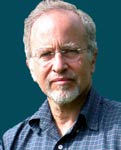 Prof
Larry Benowitz
Prof
Larry Benowitz
Director, Department of Neurosurgery. Harvard Childrens Hospital, Boston MA
Larry Benowitz's research focuses on restoring nerve function lost as
a consequence of stroke or injury. Under normal circumstances, nerve
cells in the mature central nervous system (CNS: brain, spinal cord,
eye) cannot re-establish their connections after injury, nor can
intact cells grow new connections to compensate for those that have
been lost. As a result of this, victims of traumatic injury, stroke
or neurodegenerative diseases can suffer permanent and often
devastating losses in movement, sensation, bodily functions, and
thinking. The goals of the Benowitz lab are to discover the basic
mechanisms that control the growth of nerve connections and to apply
insights from this work to promote regeneration and functional
recovery after CNS injury.
Senior Research Investigator at Moscow Helmholtz Research Institute
of Eye Diseases (RF), scientific consultant EXSYMOL SAM, Monte Carlo
(Principaute de Monaco), senior investigator, scientific consultant
Bruschettini S.r.l., Genoa (Italy), Executive Director Innovative Vision
Products, Inc., Delaware (USA).
Graduated from the 2nd Moscow Medical Institute (Pirogov’s),
Medico-Biological Faculty as doctor-biophysicist on June 28, 1982.
1983: Young scientific researcher at Moscow Helmholtz Research Institute
of Eye Diseases,
1983-1989, Scientific researcher,
1989-1998, Senior Scientific Researcher at the same Helmholtz Institute
above cited
1998- present time: Executive Director at Innovative Vision Products,
Delaware, USA
He earned a Ph.D. in Biophysics and Pathophysiology at the Moscow
Helmholtz Research Institute of Eye Diseases, Moscow, Russian Federation
on April 6, 1988.
Since 1992 scientific consultant EXSYMOL SAM, Monte Carlo, Principaute
de Monaco.
Since 1991- senior investigator, scientific consultant Bruschettini
S.r.l.
Since 1998- current time : Executive Director, Innovative Vision Products,
Delaware, USA
Contributed 97 articles to professional
journals; International patentee (15) in the field.
Executive Director of Chernobyl Workers Goodwill Union since 1992.
Recipient Oka Memorial Award, Yokohama, Japan, 1992 ;
Grantee International Science Foundation in 1994
Professional Interests: Lens research, Medical optics, oxidative stress,
antioxidants
Avocations: launching of scientific and industrial Projects.
2006 - Rewiring the injured brain: novel growth
factors, signaling pathways, and combinatorial treatment
|Damage to the central nervous system (CNS) can result
in devastating and often permanent losses of sensory, motor, cognitive,
and/or autonomic functions. This poor outcome is due in part to the
limited capacity of the CNS to regenerate: few neurons that die are
replaced, neurons that remain alive but whose axons are injured can
not regrow these, and undamaged neurons do not generally form new connections
to compensate for ones that have been lost. Our lab has been investigating
basic mechanisms that underlie the growth of neural connections and
applying insights from this work to improve functional outcome after
various types of CNS injury. In the optic nerve, a CNS pathway in which
injured axons normally show no capacity to regrow, activating macrophages
in the eye causes the main projection neurons of the eye, the retinal
ganglion cells (RGCs), to switch into an active growth state and extend
lengthy axons through the optic nerve. This growth requires mannose
(a normal constituent of the vitreous), an agent to elevate intracellular
[cAMP], and oncomodulin, a newly discovered polypeptide growth factor
that is secreted by macrophages and other cells. Oncomodulin is an
atypical Ca2+-binding protein that binds to a high-affinity receptor
on RGCs. If, at the same time, RGCs are transfected with a gene that
renders them unresponsive to inhibitory signals associated with myelin
and the glial scar, regeneration is enhanced greatly. Axon outgrowth
in this and many other systems is mediated via Mst3b, a homolog of
a kinase that controls budding in yeast. Mst3b can be inhibited with
the purine analog 6-TG and activated with the purine nucleoside inosine.
Blocking Mst3b function or expression suppresses axon growth in culture,
Conversely, activating this kinase in vivo improves anatomical
rewiring and functional outcome after spinal cord injury and stroke.
As in the optic nerve, combined treatments to activate neurons’ growth
program while counteracting inhibitory signals enhances rewiring and
behavioral outcome to an even greater extent. These and related discoveries
may someday enable us to improve functional outcome after CNS injury